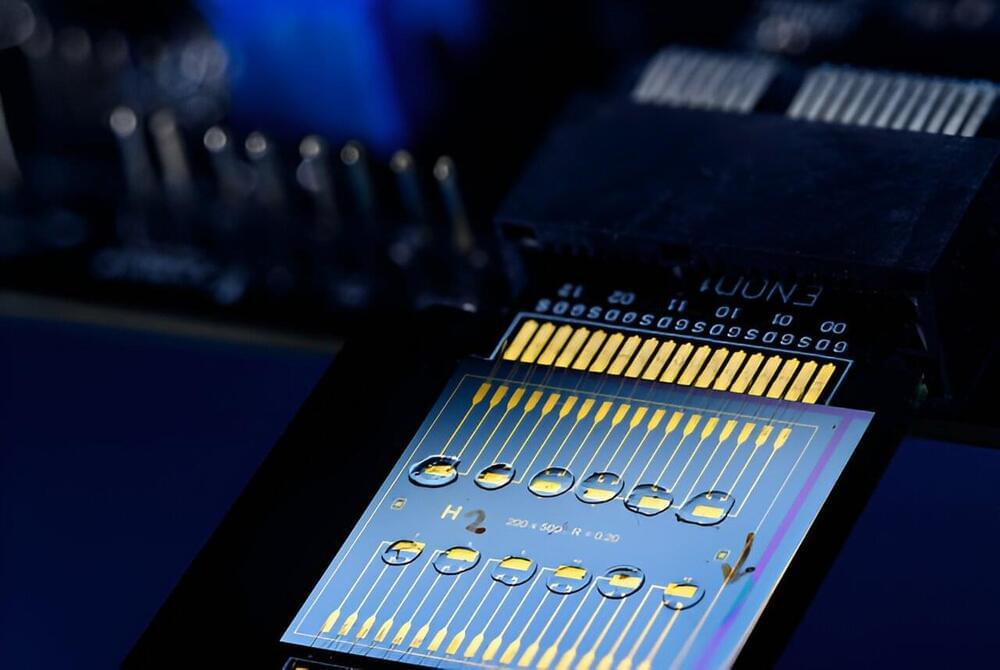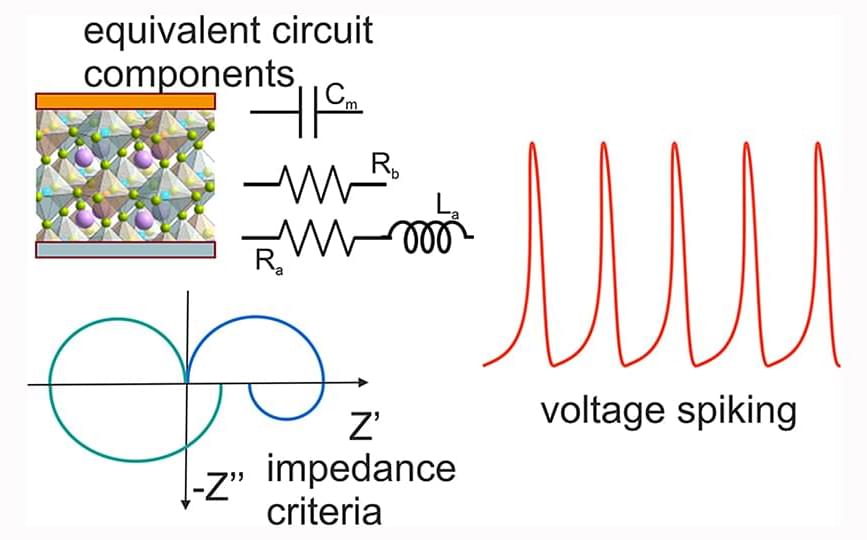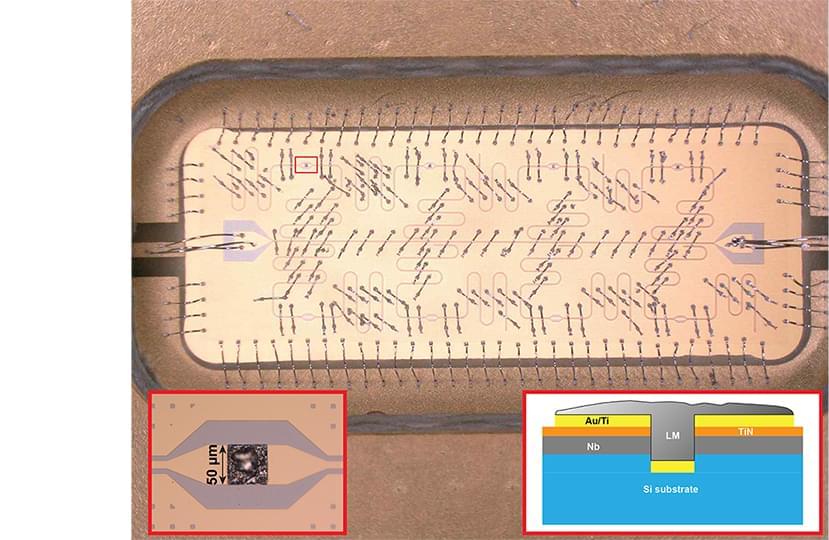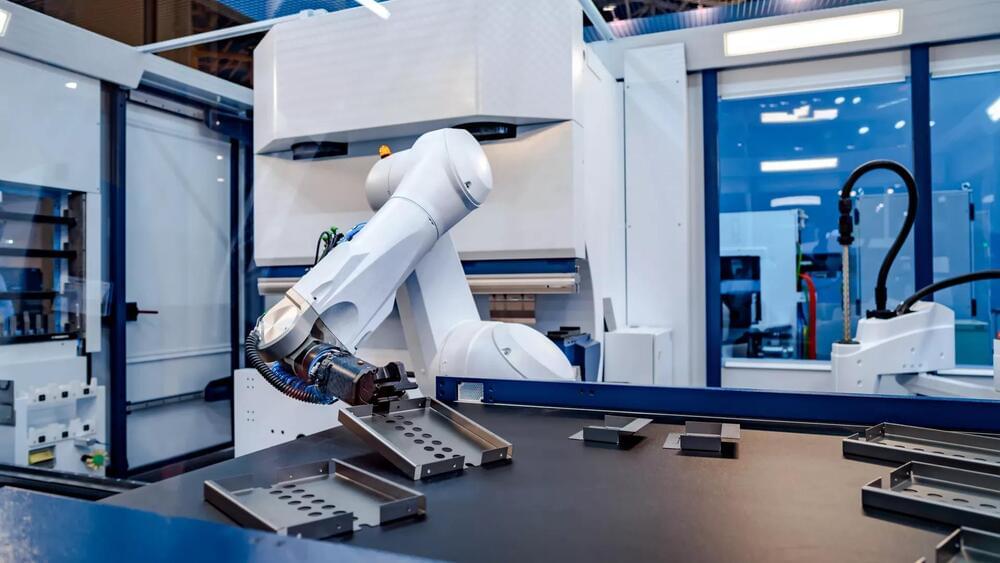According to a report by KPRC and the Texas General Land Office, officials are watching condensate leaking from an offshore drilling platform.





Large-scale neural network models form the basis of many AI-based technologies such as neuromorphic chips, which are inspired by the human brain. Training these networks can be tedious, time-consuming, and energy-inefficient given that the model is often first trained on a computer and then transferred to the chip. This limits the application and efficiency of neuromorphic chips.
TU/e researchers have solved this problem by developing a neuromorphic device capable of on–chiptraining that eliminates the need to transfer trained models to the chip. This could open a route toward efficient and dedicated AI chips.
Have you ever thought about how wonderful your brain really is? It’s a powerful computing machine, but it’s also fast, dynamic, adaptable, and very energy efficient.

Identifying individuals who are at a high risk of age-related morbidities may aid in personalized medicine. Circulating proteins can discriminate disease cases from controls and delineate the risk of incident diagnoses1,2,3,4,5,6,7,8. While singular protein markers offer insight into the mediators of disease5,9,10,11, simultaneously harnessing multiple proteins may improve clinical utility12. Clinically available non-omics scores such as QRISK typically profile the 10-year onset risk of a disease13. Proteomic scores have recently been trained on diabetes, cardiovascular and lifestyle traits as outcomes in 16,894 individuals14. Proteomic and metabolomic scores have also been developed for time-to-event outcomes, including all-cause mortality6,15,16,17,18,19,20,21.
Here, we demonstrate how large-scale proteomic sampling can identify candidate protein targets and facilitate the prediction of leading age-related incident outcomes in mid to later life (see the study design summary in Extended Data Fig. 1). We used 1,468 Olink plasma protein measurements in 47,600 individuals (aged 40–70 years) available as part of the UK Biobank Pharma Proteomics Project (UKB-PPP)22. Cox proportional hazards (PH) models were used to characterize associations between each protein and 24 incident outcomes, ascertained through electronic health data linkage. Next, the dataset was randomly split into training and testing subsets to train proteomic scores (ProteinScores) and assess their utility for modeling either the 5-or 10-year onset of the 19 incident outcomes that had a minimum of 150 cases available. We modeled ProteinScores alongside clinical biomarkers, polygenic risk scores (PRS) and metabolomics measures to investigate how these markers may be used to augment risk stratification.



The brain, arrives at the claim that it possesses a non-physical, subjective awareness and assigns a high degree of certainty to that extraordinary claim. The theory does not address how the brain might actually possess a non-physical essence. It is not a theory that deals in the non-physical. It is about the computations that cause a machine to make a claim and to assign a high degree of certainty to the claim. The theory is offered as a possible starting point for building artificial consciousness. Given current technology, it should be possible to build a machine that contains a rich internal model of what consciousness is, attributes that property of consciousness to itself and to the people it interacts with, and uses that attribution to make predictions about human behavior. Such a machine would “believe” it is conscious and act like it is conscious, in the same sense that the human machine believes and acts.
This article is part of a special issue on consciousness in humanoid robots. The purpose of this article is to summarize the attention schema theory (AST) of consciousness for those in the engineering or artificial intelligence community who may not have encountered previous papers on the topic, which tended to be in psychology and neuroscience journals. The central claim of this article is that AST is mechanistic, demystifies consciousness and can potentially provide a foundation on which artificial consciousness could be engineered. The theory has been summarized in detail in other articles (e.g., Graziano and Kastner, 2011; Webb and Graziano, 2015) and has been described in depth in a book (Graziano, 2013). The goal here is to briefly introduce the theory to a potentially new audience and to emphasize its possible use for engineering artificial consciousness.
The AST was developed beginning in 2010, drawing on basic research in neuroscience, psychology, and especially on how the brain constructs models of the self (Graziano, 2010, 2013; Graziano and Kastner, 2011; Webb and Graziano, 2015). The main goal of this theory is to explain how the brain, a biological information processor, arrives at the claim that it possesses a non-physical, subjective awareness and assigns a high degree of certainty to that extraordinary claim. The theory does not address how the brain might actually possess a non-physical essence. It is not a theory that deals in the non-physical. It is about the computations that cause a machine to make a claim and to assign a high degree of certainty to the claim. The theory is in the realm of science and engineering.

OpenAI is reportedly tracking its progress toward building artificial general intelligence (AGI). This is AI that can outperform humans on most tasks. Using a set of five levels, the company can gauge its progress towards its ultimate goal.
According to Bloomberg, OpenAI believes its technology is approaching the second level of five on the path to artificial general intelligence. Anna Gallotti, co-chair of the International Coaching Federation’s special task force for AI and coaching, called this a “super AI” scale when sharing on LinkedIn, seeing the possibility for entrepreneurs, coaches and consultants.
Axios said that AI experts disagree over whether “today’s large language models, which excel at generating text and images, will ever be capable of broadly understanding the world and flexibly adapting to novel information and circumstances.” Disagreement means blind spots, which lead to opportunity.

Achieving such a concept — commonly referred to as AGI — is the driving mission of ChatGPT-maker OpenAI and a priority for the elite research wings of tech giants https://fortune.com/company/amazon-com/” class=””>Amazon, https://fortune.com/company/alphabet/” class=””>Google, Meta and https://fortune.com/company/microsoft/” class=””>Microsoft.
It’s also a cause for concern https://apnews.com/article/artificial-intelligence-risks-uk-…d6e2b910b” rel=“noopener” class=””>for world governments. Leading AI scientists published research Thursday in the journal Science warning that unchecked AI agents with “long-term planning” skills could pose an existential risk to humanity.
But what exactly is AGI and how will we know when it’s been attained? Once on the fringe of computer science, it’s now a buzzword that’s being constantly redefined by those trying to make it happen.